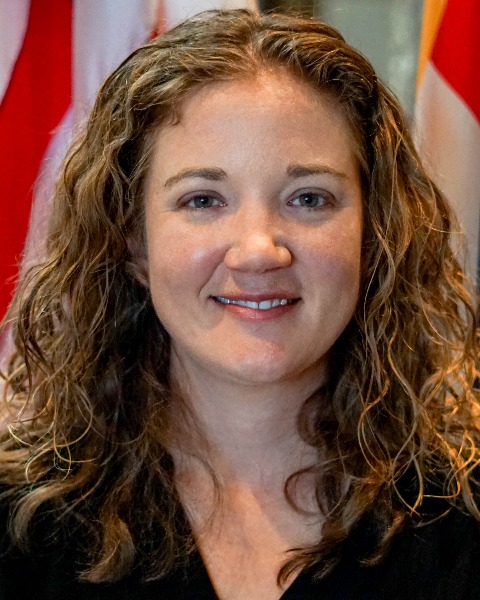Back


Clinical Posters
JL1008C: Development of an Inpatient Admission Infusion Center to Improve Admission Flow and Patient Experience
Saturday, October 22, 2022
10:00 AM – 11:00 AM ET

Has Audio

Meredith G. Beaton, RN, MSN, AGACNP (she/her/hers)
APP Clinical Director, Assistant Professor
University of Colorado, Division of Hematology
Boulder, Colorado, United States
Poster Presenter(s)
BACKGROUND
At a large academic hospital in the Mountain Region, planned chemotherapy admissions are often hindered by ongoing hospital capacity challenges leading to inefficient inpatient unit flow, patient and provider dissatisfaction, potential increased risk for adverse events, and lost revenue. As oncology providers, we recognize that a cancer diagnosis is life-changing and causes significant stress for our patients. We owe it to our patients to try to make the process of receiving treatment as reliable, efficient, and pleasant as possible.
PROCESSES AND INTERVENTIONS
In an effort to create an improved patient experience our multi-disciplinary team created a mini-infusion center on the inpatient unit with dedicated equipment and staffing to ensure that scheduled chemotherapy admissions can reliably and efficiently be admitted early in the day; their chemotherapy can consequently be started earlier in the day when sufficient resources including nurses, pharmacists, and providers are available; and ultimately reduce patients' length of stay thereby reducing overall costs and improving hospital capacity while improving patient and provider satisfaction.
RESULTS
By implementing a three-month pilot of this proposal using just two dedicated spaces on the inpatient unit, we were able to admit 75% of our scheduled chemotherapy admissions by 1200 and reduce our pre-chemotherapy outpatient provider appointments from 32% to 13%. Data collected from this pilot program revealed that patients who were admitted earlier in the day had a reduced length of time from admission to chemotherapy start time and a reduced length of stay from 4.9 days to 4.3 days resulting in a savings of $40,707 during the pilot. Extrapolating from this pilot program, by creating a permanent inpatient infusion area for early admissions with three patient bays, our estimated cost savings is $760,000/year. Additionally, the development of a reliable and streamlined admission process with dedicated staff and space resulted in improved patient and provider satisfaction.
CONCLUSIONS
Creating a dedicated space for scheduled chemotherapy admissions on an inpatient oncology unit creates a more efficient admission process for both patients and staff. Patients can be efficiently evaluated and admitted so that admission to chemotherapy start time is minimized thereby reducing their overall length of stay. This process improvement results in increased patient satisfaction as patients can anticipate their admission process when admitting for chemotherapy and know that their hospital stay will result in as minimal an impact on their lives as possible.
RECOMMENDATIONS
We recommend the creation of a permanent Admission Infusion Center on inpatient oncology units to minimize chemotherapy delays, patient and provider frustration, and potential safety issues by dedicating staff and equipment to this space in order to streamline the admission process of scheduled chemotherapy patients.
At a large academic hospital in the Mountain Region, planned chemotherapy admissions are often hindered by ongoing hospital capacity challenges leading to inefficient inpatient unit flow, patient and provider dissatisfaction, potential increased risk for adverse events, and lost revenue. As oncology providers, we recognize that a cancer diagnosis is life-changing and causes significant stress for our patients. We owe it to our patients to try to make the process of receiving treatment as reliable, efficient, and pleasant as possible.
PROCESSES AND INTERVENTIONS
In an effort to create an improved patient experience our multi-disciplinary team created a mini-infusion center on the inpatient unit with dedicated equipment and staffing to ensure that scheduled chemotherapy admissions can reliably and efficiently be admitted early in the day; their chemotherapy can consequently be started earlier in the day when sufficient resources including nurses, pharmacists, and providers are available; and ultimately reduce patients' length of stay thereby reducing overall costs and improving hospital capacity while improving patient and provider satisfaction.
RESULTS
By implementing a three-month pilot of this proposal using just two dedicated spaces on the inpatient unit, we were able to admit 75% of our scheduled chemotherapy admissions by 1200 and reduce our pre-chemotherapy outpatient provider appointments from 32% to 13%. Data collected from this pilot program revealed that patients who were admitted earlier in the day had a reduced length of time from admission to chemotherapy start time and a reduced length of stay from 4.9 days to 4.3 days resulting in a savings of $40,707 during the pilot. Extrapolating from this pilot program, by creating a permanent inpatient infusion area for early admissions with three patient bays, our estimated cost savings is $760,000/year. Additionally, the development of a reliable and streamlined admission process with dedicated staff and space resulted in improved patient and provider satisfaction.
CONCLUSIONS
Creating a dedicated space for scheduled chemotherapy admissions on an inpatient oncology unit creates a more efficient admission process for both patients and staff. Patients can be efficiently evaluated and admitted so that admission to chemotherapy start time is minimized thereby reducing their overall length of stay. This process improvement results in increased patient satisfaction as patients can anticipate their admission process when admitting for chemotherapy and know that their hospital stay will result in as minimal an impact on their lives as possible.
RECOMMENDATIONS
We recommend the creation of a permanent Admission Infusion Center on inpatient oncology units to minimize chemotherapy delays, patient and provider frustration, and potential safety issues by dedicating staff and equipment to this space in order to streamline the admission process of scheduled chemotherapy patients.

